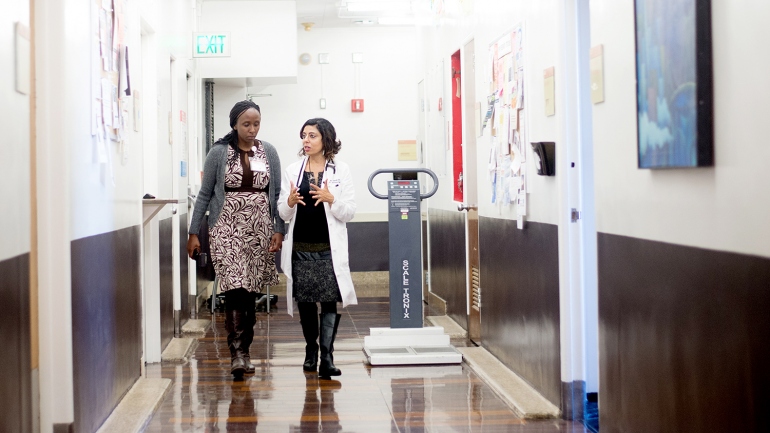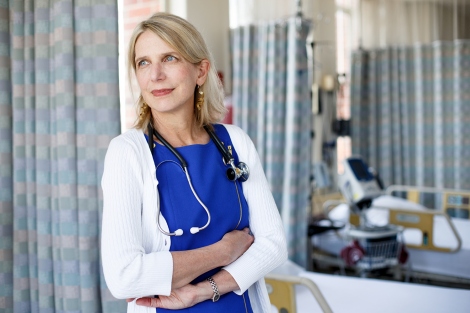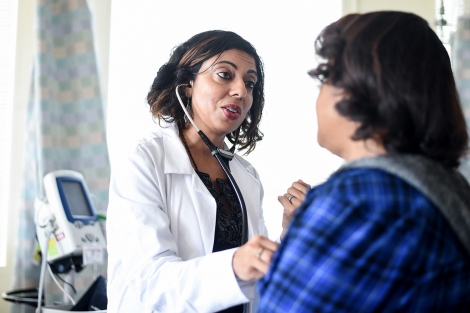San Francisco Moves Toward Zero New HIV Infections with Help from UCSF

When San Francisco’s Getting to Zero collaboration first announced its mission to achieve zero new HIV infections, zero HIV-associated deaths and zero HIV stigma in San Francisco, the aims were considered a moonshot.
Three years later, these goals don’t seem so distant.
In 2016, new HIV diagnoses in San Francisco reached a record low: 223. This represents a 16 percent decrease from 2015, according to a recent report from the San Francisco Department of Public Health (SFDPH).
At the peak of the AIDS epidemic in 1992, 2,332 new HIV diagnoses in San Francisco were reported.
“We are realizing improvements due to the hard work and dedication of countless individuals,” San Francisco Mayor Edwin M. Lee said in a press release. “From the clinicians and researchers at the Department of Public Health and UCSF to community advocates and our steadfast City officials.”
A Citywide Effort
Much of San Francisco’s progress in fighting new HIV infections can likely be contributed to Getting to Zero – a citywide collaboration to end HIV transmission that was co-founded by UC San Francisco’s Diane Havlir, MD, Susan Buchbinder, MD, now-San Francisco Supervisor Jeff Sheehy and other city leaders.
The collaboration encourages community organizations, providers, researchers, and advocates to share resources and to work together.

“There are many reasons for the decline in new HIV infections,” said Havlir, chief of UCSF’s HIV, Infectious Diseases, and Global Medicine Division. “Expansion of preventative treatments to protect at-risk individuals against infection, like PrEP (Pre-Exposure Prophylaxis)]; initiation of treatment immediately after diagnosis; and a focus on retention and re-engagement efforts – these three efforts are crucial.”
Sheehy, former communications director of UCSF’s AIDS Research Institute and now San Francisco’s first openly HIV-positive Supervisor, said he thinks the city is on the right track.
“San Francisco can be the first city to Get to Zero,” said Sheehy. “But only if we continue to deploy the necessary resources for core services and new initiatives for those most in need.”
A Thriving Partnership
For decades, UCSF has embraced its partnership with San Francisco to fight HIV, including the operation of UCSF’s Ward 86 – one of the world’s first HIV/AIDS outpatient clinics – since 1983 at Zuckerberg San Francisco General Hospital and Trauma Center.
More recently, RAPID – a clinical approach developed at Ward 86 – was adopted by SFDPH in 2013. The program links newly diagnosed HIV patients in San Francisco with antiretroviral therapy (ART) immediately upon diagnosis, ideally the same day.
“Starting ART immediately results in much earlier suppression of viral load,” said Susa Coffey, MD, professor of medicine and attending physician at Ward 86. “This means better health and less likelihood of HIV transmitting to someone else.”
The RAPID program is being adapted worldwide and is a focus of new World Health Organization guidelines.
“We have established a new standard of care,” said Coffey.
An Aging Population
Despite the decline in new HIV infections, the new SFDPH report indicates more HIV-positive persons in San Francisco today (16,010) than ever, mostly because of people living longer on highly effective ART. Today, 63 percent of people living with HIV in San Francisco are over the age of 50, and 26 percent are older than 60.

“People with HIV age a little faster,” said Monica Gandhi, MD, medical director of Ward 86 and UCSF’s Golden Compass Program, a specialty medical program for older adults with HIV. “This population needs comprehensive services to ensure continued health and to allow patients to thrive, not just survive.”
The first of its kind, Golden Compass launched at Zuckerberg San Francisco General Hospital in 2017 and provides multi-disciplinary care – such as cardiology, brain and memory health and social support – for HIV positive patients over the age of 50.
A Growing Challenge
The new SFDPH report, released Sept. 15, reflects a growing challenge in the Bay Area: homelessness. Roughly 13 percent of new HIV diagnoses are among homeless individuals, and homeless people with HIV continue to experience worse outcomes than others. For instance, 31 percent of homeless people with HIV are virally suppressed (meaning HIV is undetectable) compared with 73 percent overall for HIV positive people in San Francisco.
Homeless people with HIV are confronted with many challenges to treatment, including poor nutrition, unstable housing and limited access to care.
UCSF is working with SFDPH on promising programs such as LINCS (Linkage, Integration, Navigation and Comprehensive Services) to help vulnerable, marginally-housed patients connect to care.
Despite significant challenges, Havlir is optimistic for the future of HIV in San Francisco and the world.
“The work ahead is going to require even more effort and innovation on all fronts,” said Havlir. “The world is watching – we can and must succeed.”